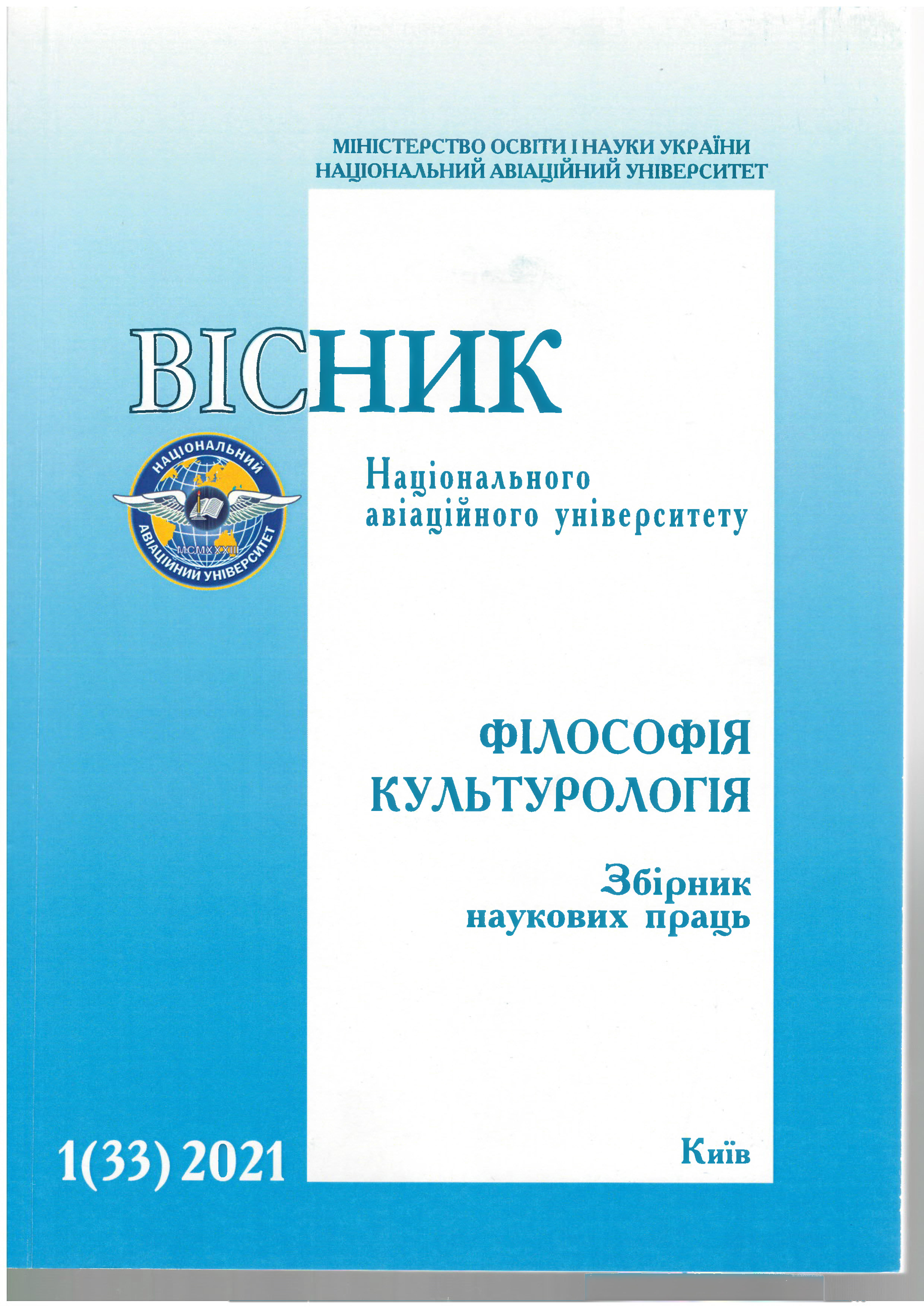SYMBOL AS ATTRIBUTE OF COMMUNICATION IN THE DIGITAL AGE (SOCIOCULTURAL ASPECT)
DOI:
https://doi.org/10.18372/2412-2157.33.15663Keywords:
symbol, sign, communication, symbolic communication, culture, Digital AgeAbstract
Introduction. In recent decades, humanity has lived in a special world created by signs and symbols modeling or simulating the objective reality perceived as a whole existing one by some participants of communication. In the new "reality" being constructed in man’s mind through communication man interacts rather with images of things or people not with physical objects themselves. The aim and the tasks. The article is devoted to the study of various aspects of symbolic communication in the digital age and to identify the changes taken place in understanding of the nature and content of symbols. Research methods. The study is based on a sociocultural methodological approach to research the nature of communicative processes in the context of cultural transformations that occur in the digital age. To solve certain problems, the systematic and complementarity principles, as well as the method of cultural and semantic analysis are used. Research results: the features of symbolic communication in the context of the mass use of information-communication technologies that affect the communicating people in different social networks are studied. The evolution of the concept of communication in social thought is presented with an emphasis on the philosophical aspect. The sociocultural methodological approach used in the study allowed to consider the nature of communication processes in the context of cultural transformations taking place in the digital era. Culture is preserved, comprehended and transmitted through communication. Each culture is a unique symbolic-sign system, used in particular codes. To achieve goals in modern communication, skills of correct coding and decoding (interpretation) of messages assume a particular importance. Discussion. It is substantiated that with the spread of aesthetic ideas and mechanisms of mass culture, new information and communication technologies in the Postmodern era, a new perspective on the nature of symbols has appeared: they are losing their primary meaning and turning into empty forms that can be "filled" with any content. These processes have led to the dialogue decline and meaningful changes in communication processes. New realities make researchers find ways to solve the problem of ineffective communication, contacts occurring in various networks. Conclusion. The study of the features of symbolic communication in the digital era made it possible to conclude that symbols will not lose their meaning in future, since with their help people are able to more easily adapt to changing living conditions.
References
Barfield, Owen. Poetic Diction./ Owen Barfield. – London:
Faber and Faber, 1928.
Casmir F.A Multicultural perspective of human communication
// Intercultural and international communication / Ed. by
F. Casmir. – N.Y., 1978.
Hall, E. The silent language. / E. Hall. – New York: Doubleday,
– 240 p.
Kim Y.Y. Communication and cross-cultural adaptation: an
integrative theory./ Kim Young Yun. – Clevedon, 1988.
Ruben B.D. Communication and human behavior. /
В.D. Ruben – N.Y., 1984.
Антіпова О. П. Трансформація мовної норми в умовах
інформаційного суспільства / О. П. Антіпова // Вісник націона-
льного авіаційного університету. Серія: Філософія. Культуро-
логія. – Вип. 1 (29). – К.: НАУ, 2019. – С. 130-135.
Бердяев Н. А. Я и мир объектов. Опыт философии оди-
ночества и общения // Бердяев Н. А. Философия свободного
духа. – М.: Республика, 1994. – 480 с.
Бодрийяр Ж. Символический обмен и смерть / Ж. Бо-
дрийяр. – М.: Добросвет, 2000. – 387 с.
Бодрийяр Ж. Симулякры и симуляция / Ж. Бодрийяр. –
Тула: Тульский полиграфист, 2013. – 214 с.
Гумбольдт В. фон. Избранные труды по языкознанию / В.
фон Гумбольдт; [пер. с нем., общ. ред. Г. В. Рамишвили; послесл.
А. В. Гулыги и В. А. Звегинцева]. – М.: Прогресс, 2000. – 400 с.
Дротянко Л. Г. Комунікація в соціальних мережах і фе-
номен мультикультуралізму / Л. Г. Дротянко // Вісник націона-
льного авіаційного університету. Серія: Філософія. Культуро-
логія. – Вип. 1 (29). – К.: НАУ, 2019. – С. 16-21.
Дротянко Л. Г. Філософія діалогу в культурі інформа-
ційної ери / Л. Г. Дротянко // Вісник національного авіаційного
університету. Серія: Філософія. Культурологія. – Вип. 1 (21). –
К.: НАУ, 2015. – С. 19-22.
Кассирер Э. Опыт о человеке. / Э. Кассирер // Избран-
ное. Опыт о человеке. – М.: Гардарика, 1998. – 784 с.
Малахов В. Г. Етика: курс лекцій / В. Г. Малахов. – К.:
Либідь, 2000. – 304 с.
Мамардашвили М. К. Символ и сознание. Метафизи-
ческие рассуждения о сознании, символике и языке. /
М. К. Мамардашвили, А. М. Пятигорский. – М.: Школа «Языки
русской культуры», 1999. – 216 с.
Мартьянов В. С. Символ как основание коммуникации
в культуре // Культура и цивилизация. Материалы Всероссий-
ской научной конференции. Екатеринбург, 17-18 апреля 2001:
В 2 ч. – Екатеринбург, 2001 – Ч 2. – С. 197-199.
Сто великих мыслителей / И. А. Мусский. – М.: Вече,
– 685, [2] с.
Уорнер У. Живые и мертвые / пер. с англ. В. Николае-
ва. – Москва –Санкт-Петербург: Университетская книга,
(Культурология. XX век), 2000. – С. 671.
Уэбстер Ф. Теории информационного общества /
Ф. Уэбстер – М.: Аспект Пресс, 2004. – 400 с.
Філософський екциклопедичний словник / за ред.
В. І. Шинкарука. – К.: Інститут філософії ім. Г.С. Сковороди
НАНУ, «Абрис», 2002 – 742 с.
Фриауф В. А. Парадоксы коммуникации / В. А. Фриауф
// Международный литературно-философский журнал «То-
пос». [Электронный ресурс]. – 2004. – № 3.
Эко У. Отсутствующая структура. Введение в семио-
логию / У. Эко. – СПб., 1998. – 544 с.
Ясперс К. Смысл и назначение истории / К. Ясперс. –
М.: Политиздат, 1991. – 527 с.


